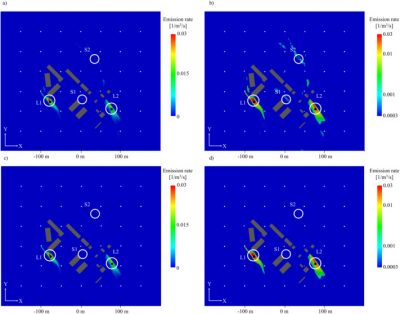Ph.D. candidate Carol A. Brereton and Professor Matthew Johnson have published a new research paper in Atmospheric Environment that investigates an innovative approach to finding and measuring fugitive leaks within oil and gas facilities. Also co-authored with EERL alum Ian Joynes and Prof. Lucy Campbell in Carleton’s Mathematics Department, this paper has important implications for our ability to efficiently detect, locate, and quantify unknown fugitive sources. This could allow for prioritization of repairs, lower emissions, and significantly improved emissions reporting.
Methane is a potent climate forcer and reducing its release into the atmosphere is an important near term climate change strategy. The oil and gas sector is one of the largest sources of methane emissions in North America. Fugitive emissions, or unexpected and unintentional emissions such as those from leaking components, can often be mitigated economically through maintenance and repair. Unfortunately, as there may be thousands of potential gas sources in any facility (e.g. fittings, valves etc.), and only a very small number are typically responsible for the majority of gas released. Because current manual survey approaches are generally only performed sporadically, fugitive emission sources can release gas for months without being noticed.

Fig. 8. Predicted emissions at 1 m height using 30-sec transient ideal wind data with marked actual release locations (white circles) and 50-m sensor grid (white points) for a) linear scale, b) log scale, c) linear scale with regional filter, and d) log scale with regional filter. Emission centroids are marked with black dots.
Continuous sensor monitoring is an enticing alternative. As presented in the paper, a sparse network of continuous concentration sensors combined with wind information could be used to detect and locate new leaks as they emerge, as well as determine the size of the previously unknown source(s). The approach would greatly speed up maintenance and repair, directly reducing methane emission. This paper demonstrates the viability of this approach in a range of simulated scenarios. Continuing research is focused on reducing computational cost to simplify practical implementation.